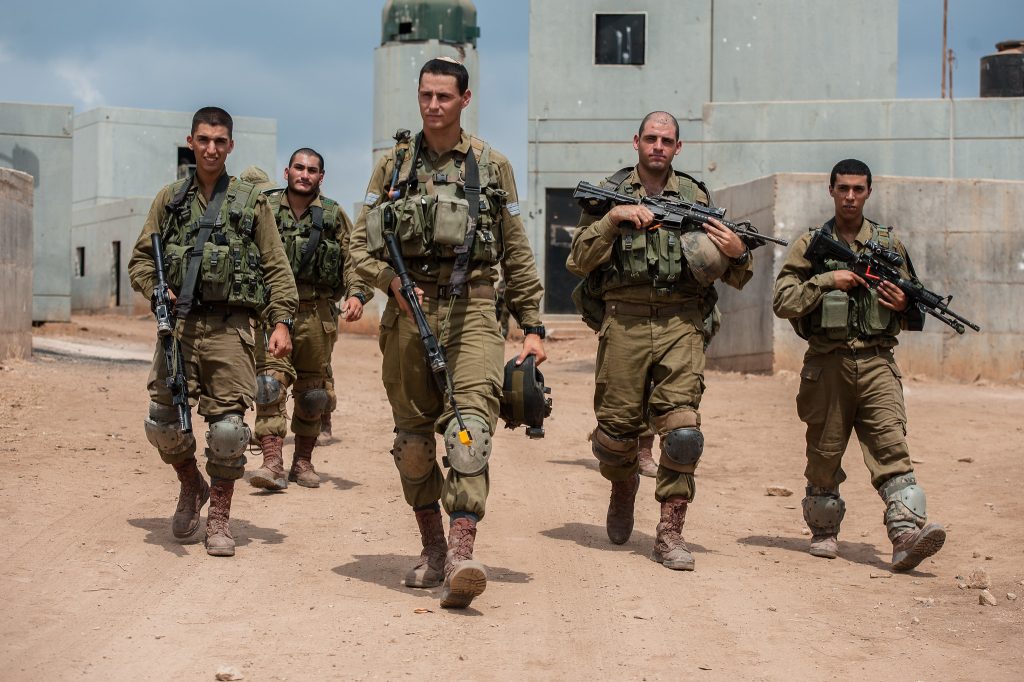Australia/Israel Review
The coming showdown in Gaza
Nov 1, 2023 | Seth Frantzman

Israel is readying itself to face off against Hamas and other groups that have had time to fortify the Gaza Strip. This is not the first time Israel has operated on the ground in Gaza; Israel sent troops into the area in 2009 and 2014 and, prior to the withdrawal of its army, operated in the small region for decades. But this time is different. The October 7 attacks, which resulted in the massacre of more than 1,400 Israeli civilians and more than 300 soldiers and police, show that Hamas has become deadlier.
To understand the challenges involved, it’s important to examine the environment that Israel will soon confront. Though the Gaza Strip is small (about 363 square kilometres), it’s not an unbroken urban landscape. Built-up areas are numerous, particularly around Gaza City and Khan Yunis in the south, but so are fields, beaches, and areas that were once villages that have now merged into towns and cities. The area is densely populated, containing about two million people, many under 18. Israel has encouraged the civilian population to flee south, toward the Egyptian border. How many will do this and what effect it will have on the situation is not yet clear, but a humanitarian crisis is easy to imagine.
The issue of civilians is a major concern. Israel has improved the use of precision munitions in its warfighting over the years. Conflicts in Gaza, in particular, have become less harmful to civilians since 2009. Israel prefers to strike infrastructure, such as tunnels, rocket-launch sites, or command and control centres. Israel has used large numbers of small drones, as well as advanced technology in previous conflicts. This is part of the Israel Defence Forces’ Momentum Doctrine, which is intended to bring more intelligence to front-line units and enable “multi-dimensional” units to engage in “combined arms” warfare – a jargon-filled way of saying that Israel uses more technology to network together infantry, tanks, airplanes, and drones.
The new networking technology is supposed to make fighting in the urban environment less challenging. Over the years, I have spent time covering IDF drills in which soldiers assault mock-urban towns. This includes bringing together infantry, helicopters, tanks, and drones. Technology can help spot threats, such as men with RPGs, or it can help identify changes in the environment. No simple solution exists to the problem of enemies hiding out in rubble or using tunnels, but Israel is not the first nation to fight in an urban setting. Not only has Israel trained for this; it has also learned from partner countries such as the US, which gained urban-combat experience in places like Iraq and Syria during the war on ISIS.
Nevertheless, the challenges for Israel will be made more acute if civilian suffering in southern Gaza intensifies or if it appears that the battle is damaging too much civilian infrastructure. Driving tanks down streets and using bulldozers inevitably churns up the pavement and destroys things. Israel has already used many thousands of munitions in air strikes. It will be moving, therefore, into an already-damaged environment.
As Israel confronts Hamas and other groups in Gaza, such as Palestinian Islamic Jihad, it will be dealing with an enemy that has studied its tactics carefully. Hamas knows that Israel has advanced technology and tools like drones. Hamas itself uses small quadcopter drones, which it has armed with small munitions, and it has developed larger drones in recent years.
On Sunday, Oct. 15, the Israel Defence Forces unveiled captured weapons and documents from Hamas terrorists found in the wake of the October 7 attack. In the stockpile: operational plans, satellite phones, encrypted numbers, and other systems. “So far, hundreds of documents and certificates, hundreds of mobile devices, means of communication and cameras have been collected,” the IDF said.
The material left behind and found on Hamas members also includes weapons, munitions, and various types of explosives – from RPGs and AK-47s to anti-personnel mines and other converted munitions used to blow open the doors of homes or attached to cars as booby-traps.
Hamas also has SA-7 anti-aircraft systems and TC-6 round metal anti-tank mines. Hamas brought into Israel a large number of mines designed to harm civilians and destroy vehicles and buildings, suggesting that the group has been thinking systematically about its method of terror and warfighting.
Hamas has generally not been successful in the past at these kinds of operations. If it has been stockpiling munitions in Gaza, even if those munitions are old, it’s plausible that the group has considered how it will defend the Strip. Hamas could melt into civilian areas and use hostages as shields – it took about 220 hostages on October 7. How Hamas will defend the area remains to be seen, but Israel will face many challenges, regardless of what the terror group does next.






